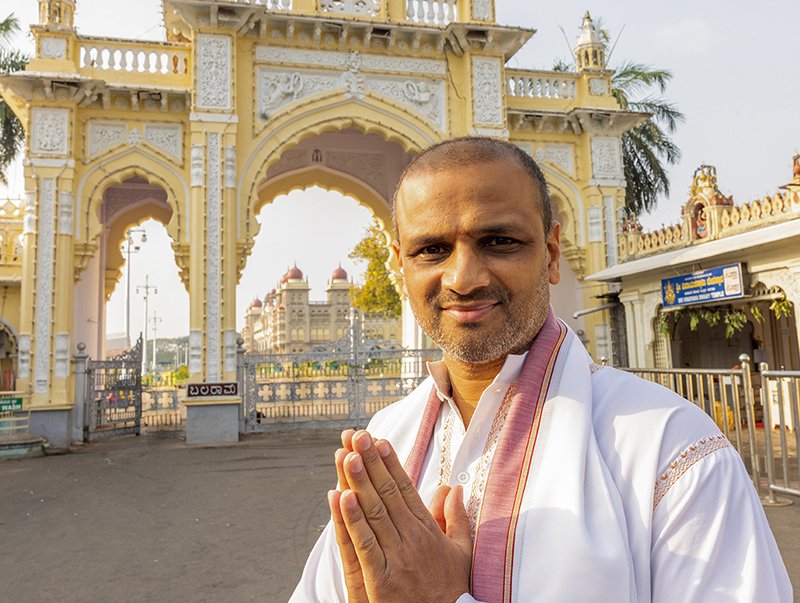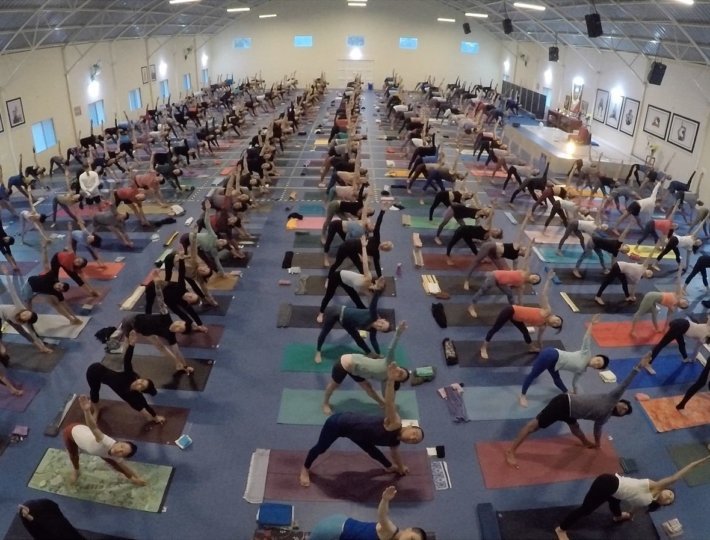“Yoga is not about self-improvement or making ourselves better. It is a process of deconstructing all the barriers we may have erected that prevent us from having an authentic connection with ourselves and with the world.” – Donna Farhi
Each time I come to the mat, new metaphors for understanding the essence and purpose of the practice emerge. Teachers offer words to inspire clarity and understanding, a posture once unattainable suddenly materializes and an “a-ha” moment ensues, or in the moments both magical and mundane, in which sweat drips down from my face or meditation brings me closer to existential levity—yoga finds new meaning. We’re told that yoga is a practice of returning to one’s true self; it’s an unpacking and a discarding of the many layers of armor and baggage—both inherited and self-imposed—which we’ve accrued over time to cope with our personal and generational suffering.
Related: How Yoga and Meditation Helped Me Manage Anxiety
We’re also told that yoga means union: We unite with our infinite unchanging center, a product of our primordial purity and divinity. While the Sanskrit word yoga is commonly defined as “to join” or “to attach”, many scholars have posited that in fact the paramount definition comes from Patanjali’s Yoga Sutras (1:2, chitta vritti nirodhah): “The cessation of the fluctuations of the mind.” In other words, yoga can be understood as a state of consciousness in which the mind becomes quiet, and the totality of the human attains a higher state of awareness. In essence, then, the practice has no real end goal; rather it is a practice of striving toward clarity, unity, and liberation.
The practice of yoga, which dates back to the sixth century BCE in India, has been evolving since its early practitioners sought liberation through esoteric and ascetic rituals. Yoga today is an all-encompassing term that authentically applies to the physical and spiritual realms of the practice, and as such, the answer to, “Why practice yoga?” has become increasingly individualized. For some, yoga serves as a tool for calming anxiety, or uplifting depression. Others see yoga as a canvas for mass intention to relieve universal suffering. Still others pick up on yoga’s ability to heal broadly—some hope that it’ll help mend their broken heart, others use the practice to relieve chronic pain, and with increased research, patients with cancer, lupus, multiple sclerosis, and other conditions, see yoga as a necessary part of their treatment.
Related: 16 Incredible Stories of Healing Through Yoga
I find all of it moving. I see each of these reasons as indicative of the practice’s strength. I practice for self-acceptance, for self-growth, for self-inquiry—all aimed at realigning the physical self with the metaphysical self. Call it divine will, call it purpose, call it social action—we’re all here to serve in one way or another, and yoga helps to clarify what that is for each of us.
In Book One of Patanjali’s Yoga Sutras, the Samadhi Pada, we’re instructed on the mysteries of the mind. We’re warned against basing knowledge on false forms, lest we be seduced by ignorant perception, just as we are beckoned towards a life of non-attachment and non-greed. The framework of the yoga practice is rooted in a values system that is both pure and noble, the main purpose of which is to draw us closer toward recognizing truth: “From this practice all the obstacles disappear and simultaneously dawns knowledge of the inner Self” (1:29, tatah pratyak cetanadhigamo pyantarayabhavas ca).
Ultimately, say the Sutras, we become “undisturbed by dualities” (2:48, tato dvandvanabhigatah), and through discernment and steady practice, we may—in this lifetime or another—teeter towards illumination, or Samadhi, the state of pure bliss and awareness. What’s fascinating about the language around unity and the hopeful resolve of paradox is that Patanjali never mentions eradication or complete fixes. The closer we get to the text, in fact, the closer we are to understanding that yoga is about shifting consciousness, transmuting experience; it’s not about eradication, it’s not about annihilation.
Some days, I come to the mat and each asana is a struggle; I feel inflexible and weak, and the very thought of all the postures still to come cause me mental disdain. Other days, the practice whirls by me seamlessly, and I emerge from Savasana floating. But most days, the practice gives me something in between these two poles; I’m challenged to get to know myself. I’m challenged to come up against my neuroses and my fears.
Many yogis will talk about how the practice plunges them into some manifestation of either euphoria or despair—the actual attainment of balance feels far. And then we change into our “street clothes” and leave the practice space. As the day progresses, remnants of the practice’s inherent wisdom seep into our decision making, our smile, our emails, our digestion. The experience is cyclical. Its effects release slowly. The balance the practice brings may feel seemingly elusive when we isolate yoga from the rest of life, but it is precisely in the integration of our personal devotion and our outward collaboration that the fruits of the practice become most apparent.
Related: Why Can’t I Practice Yoga Alone?
Why do we practice? To understand the essence of the Self, to unpack the layers of this Truth. There is no end, just as there is no beginning. Every breath, every muscular integration, each moment of physical and mental connection opens new channels towards understanding. We practice to become intimate with our nature. From there, all else becomes more easeful.









Comments (0)